Concordia Station | |
|---|---|
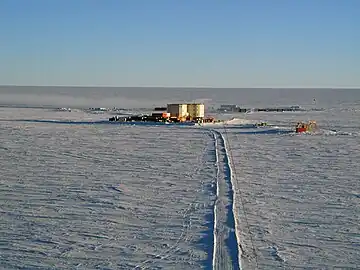 Concordia Research Station at Dome Circe, Charlie or Concordia. | |
 Concordia Station Location of Condordia Station in Antarctica | |
| Coordinates: 75°05′59″S 123°19′56″E / 75.099780°S 123.332196°E | |
| Country | |
| Location in Antarctica | Dome C Antarctic Plateau |
| Administered by | PRNA IPEV |
| Established | 2005 |
| Elevation | 3,233 m (10,607 ft) |
| Population (2017)[1] | |
| • Summer | 70 |
| • Winter | 13 |
| UN/LOCODE | AQ CON |
| Type | All Year-round |
| Period | Annual |
| Status | Operational |
| Activities | List
|
| Website | Concordia Institut Polaire Français |
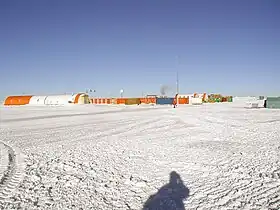
Concordia Research Station, which opened in 2005, is a French–Italian research facility that was built 3,233 m (10,607 ft) above sea level at a location called Dome C on the Antarctic Plateau, Antarctica. It is located 1,100 km (680 mi) inland from the French research station at Dumont D'Urville, 1,100 km (680 mi) inland from Australia's Casey Station and 1,200 km (750 mi) inland from the Italian Zucchelli Station at Terra Nova Bay. Russia's Vostok Station is 560 km (350 mi) away. The Geographic South Pole is 1,670 km (1,040 mi) away. The facility is also located within Australia's claim on Antarctica, the Australian Antarctic Territory.
Concordia Station is the third permanent, all-year research station on the Antarctic Plateau besides Vostok Station (Russian) and the Amundsen–Scott South Pole Station (U.S.) at the Geographic South Pole. It is jointly operated by scientists from France and Italy and regularly hosts ESA scientists.
History
In 1992, France built a new station on the Antarctic Plateau. The program was later joined by Italy in 1993.
In 1995, Pr. Jean Vernin from University of Nice Sophia-Antipolis and Pr. Giorgio Dall'Oglio from University of Rome performed the first scientific experience towards a site qualification at Dome C.
In 1996, a French-Italian team established a summer camp at Dome C. The two main objectives of the camp were the provision of logistical support for the European Project for Ice Coring in Antarctica (EPICA) and the construction of a permanent research station.
The new all-year facility, Concordia Station, became operational in 2005. The first winterover began with a staff of 13 (eleven French and 2 Italians) in February 2005.
Transportation
Concordia Skiway | |||||||||||
|---|---|---|---|---|---|---|---|---|---|---|---|
.jpg.webp) The last take-off in February 2015 | |||||||||||
| Summary | |||||||||||
| Airport type | Private | ||||||||||
| Operator | National Antarctic Research Program IPEV | ||||||||||
| Location | Antarctic Plateau | ||||||||||
| Time zone | (UTC+8) | ||||||||||
| Elevation AMSL | 10,725 ft / 3,269 m | ||||||||||
| Coordinates | 75°06′12″S 123°21′30″E / 75.103278°S 123.35825°E | ||||||||||
| Runways | |||||||||||
| |||||||||||

Most of the cargo is moved to Dome C by traverse (called raid)[3] from Dumont d'Urville Station, covering 1,200 kilometres (750 mi) in 7 to 12 days depending on weather conditions. Station personnel and light cargo arrive by air, landing on a Skiway, using the Twin Otters or Basler BT-67 flying from DDU or Zucchelli Station at 1,200 kilometres (750 mi).
Environment
Dome C is situated on top of the Antarctic Plateau. No animals or plants live at a distance of more than a few tens of kilometers from the Southern Ocean. However, south polar skuas have been spotted overflying the station, 1,200 km away from their nearest food sources. It is believed that these birds have learned to cross the continent instead of circumnavigating it.
Human biology and medicine
Concordia Station shares many stressor characteristics similar to that of long-duration deep-space missions, in particular extreme isolation and confinement, and therefore serves as a useful analogue platform for research relevant to space medicine. During the winter, the crew are isolated from the outside world, having no transportation and limited communication[4] for 9 months and live a prolonged period in complete darkness, at an altitude almost equivalent to 4000m at the equator. This creates physiological and psychological strains on the crew. Concordia station is particularly useful for the study of chronic hypobaric hypoxia, stress secondary to confinement and isolation, circadian rhythm and sleep disruption, individual and group psychology, telemedicine, and astrobiology. Concordia station has been proposed as one of the real-life Earth-based analogues for long-duration deep-space missions.[5]
Glaciology
In the 1970s, Dome C was the site of ice core drilling by field teams of several nations. In the 1990s, Dome C was chosen for deep ice core drilling by the European Project for Ice Coring in Antarctica (EPICA). Drilling at Dome C began in 1996 and was completed on December 21, 2004, reaching a drilling depth of 3270.2 m, 5 m above bedrock. The age of the oldest recovered ice is estimated to be ca. 900,000 years.[6]
Astronomy
Concordia Station has been identified as a suitable location for extremely accurate astronomical observations. The transparency of the Antarctic atmosphere permits the observation of stars even when the sun is at an elevation angle of 38°. Other advantages include the very low infrared sky emission, the high percentage of cloud-free time and the low aerosol and dust content of the atmosphere.
The median seeing measured with a DIMM Differential Image Motion Monitor [7] placed on top of an 8.5 m high tower is 1.3 ± 0.8 arcseconds. This is significantly worse than most major observatory sites, but similar to other observatories in Antarctica. However, Lawrence et al. consider other features of the site and conclude that "Dome C is the best ground-based site to develop a new astronomical observatory".[8] Note however that this was written before whole-atmospheric seeing measurements had been made at Dome C.
Thanks to the Single Star Scidar SSS, Vernin, Chadid and Aristidi et al.[9] and Giordano, Vernin and Chadid et al.[10] finally demonstrated that most of the optical turbulence is concentrated within the first 30 m atmospheric level at Dome C. The rest of the atmosphere is very quiet with a seeing of about 0.3-0.4 arcseconds, and the overall seeing is somewhat around 1.0 arcseconds.
Launched in 2007, PAIX the first robotic multi-color Antarctica Photometer[11] gives a new insight to cope with unresolved stellar enigma and stellar oscillation challenges and offers a great opportunity to benefit from an access to the best astronomical site on Earth –Dome C–. Indeed, Chadid, Vernin, Preston et al.[12] implement, for the first time from the ground, a new way to study the stellar oscillations, pulsations and their evolutionary properties with long uninterrupted and continuous precision observations over 150 days, and without the regular interruptions imposed by the Earth rotation. PAIX achieves astrophysical UBVRI bands time-series measurements of stellar physics fields, challenging photometry from Space.
The Antarctic Search for Transiting ExoPlanets (ASTEP) programme is composed of two telescopes: a 10 cm refractor installed in 2008, and a 40 cm telescope installed in 2010 and upgraded in 2022.[13][14][15]
Climate
The climate at Dome C where Concordia Station is located is frigid all year round, being one of the coldest places on Earth. It has a polar ice cap climate (Köppen EF), with maximums ranging from −24.8 °C (−12.6 °F) in December to −62 °C (−80 °F) in May, mean ranging from −30.4 °C (−22.7 °F) in December to −65.3 °C (−85.5 °F) in May and minimums ranging from −36.1 °C (−33.0 °F) in December to −68.7 °C (−91.7 °F) in May. The annual average air temperature is −54.5 °C (−66.1 °F). The station has never recorded a temperature above freezing; the warmest temperature recorded was −5.4 °C (22.3 °F) in January. Temperatures can fall below −80 °C (−112 °F) in winter, and the coldest recorded temperature was −84.6 °C (−120.3 °F) in August 2010; one of the coldest temperatures ever recorded on Earth.
Humidity is low and it is also very dry, with very little precipitation throughout the year.
Dome C does not experience the katabatic winds typical for the coastal regions of Antarctica because of its elevated location and its relative distance from the edges of the Antarctic Plateau. Typical wind speed in winter is 2.8 m/s.
| Climate data for Concordia | |||||||||||||
|---|---|---|---|---|---|---|---|---|---|---|---|---|---|
| Month | Jan | Feb | Mar | Apr | May | Jun | Jul | Aug | Sep | Oct | Nov | Dec | Year |
| Record high °C (°F) | −5.4 (22.3) |
−12.9 (8.8) |
−11.5 (11.3) |
−32.9 (−27.2) |
−28.5 (−19.3) |
−30.2 (−22.4) |
−25.4 (−13.7) |
−26.5 (−15.7) |
−30.3 (−22.5) |
−23.1 (−9.6) |
−17.0 (1.4) |
−9.4 (15.1) |
−5.4 (22.3) |
| Mean daily maximum °C (°F) | −24.9 (−12.8) |
−33.7 (−28.7) |
−48.7 (−55.7) |
−58.5 (−73.3) |
−62.0 (−79.6) |
−58.9 (−74.0) |
−58.4 (−73.1) |
−57.8 (−72.0) |
−54.1 (−65.4) |
−44.8 (−48.6) |
−32.5 (−26.5) |
−24.8 (−12.6) |
−46.6 (−51.9) |
| Daily mean °C (°F) | −31.1 (−24.0) |
−40.6 (−41.1) |
−54.0 (−65.2) |
−61.9 (−79.4) |
−65.3 (−85.5) |
−62.3 (−80.1) |
−62.1 (−79.8) |
−61.7 (−79.1) |
−59.5 (−75.1) |
−52.2 (−62.0) |
−39.3 (−38.7) |
−30.4 (−22.7) |
−51.7 (−61.1) |
| Mean daily minimum °C (°F) | −37.5 (−35.5) |
−47.7 (−53.9) |
−59.4 (−74.9) |
−65.4 (−85.7) |
−68.7 (−91.7) |
−65.8 (−86.4) |
−66.0 (−86.8) |
−65.8 (−86.4) |
−65.2 (−85.4) |
−59.8 (−75.6) |
−46.2 (−51.2) |
−36.1 (−33.0) |
−57.0 (−70.5) |
| Record low °C (°F) | −49.8 (−57.6) |
−60.0 (−76.0) |
−72.0 (−97.6) |
−78 (−108) |
−79.6 (−111.3) |
−82.2 (−116.0) |
−82.3 (−116.1) |
−84.6 (−120.3) |
−81.9 (−115.4) |
−74.0 (−101.2) |
−61.9 (−79.4) |
−45.9 (−50.6) |
−84.6 (−120.3) |
| Source: [16][17][18] | |||||||||||||
Winterovers
While the station has been in use for summer campaigns since December 1997, the first winterover (February to October) was only made in 2005. During this period, the station is inaccessible, requiring total autonomy.
First winter-over (DC01 – 2005)

The first winter began in mid-February 2005, with thirteen wintering (eleven French people and two Italians):
- Michel Munoz: station leader, plumber,
 France
France - Roberto Dicasilati: physician,
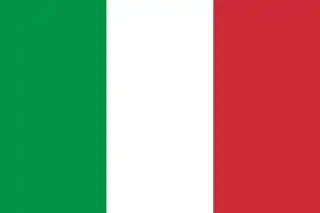 Italy
Italy - Christophe Mozer: powerhouse chief,
 France
France - Pascal Bordais: radio, electronics, computers,
 France
France - Emanuele Salvietti: glaciologist,
 Italy
Italy - Claire Le Calvez: technical chief,
 France
France - Michel Galland: electrician,
 France
France - Jean-Louis Duraffourg: chef,
 France
France - Abdelkarim Agabi (Karim Agabi): astronomer,
 France
France - Stéphane Beausire: boilermaker, welder,
 France
France - Jean Elegoet: vehicle mechanic,
 France
France - Jean-François Jurvilliers: multipurpose technician,
 France
France - Guillaume Dargaud: climatologist,
 France (under contract with the Italian National Antarctic Research Program – PNRA)
France (under contract with the Italian National Antarctic Research Program – PNRA)
In September 2005 the highest temperature was −48 °C, with an average in August of −60.2 °C and a record of −78.6 °C on 1 September. At these temperatures, trips outside had to be performed with the utmost care. Those going outside travelled at least in pairs and were equipped with a radio, spare batteries and a full fleece suit, with only the eyes at times visible. Italian Glaciologist Emanuele Salvietti had to take snow samples every day one kilometre from the base. As he had to walk (because no vehicle operates at these temperatures), he built a full face mask, with only a pipe to breathe. The slightest mistake would lead to certain injury, as astronomer Agabi Karim explained: "Burns on the cheeks and eyelashes glued to the lens of the telescope," after exposure to the freezing cold.
Second winter-over (DC02 – 2006)
The second winter was conducted from February to November 2006 with a team of ten wintering (six French, four Italian and 1 American):
- Minh Ly Pham Minh: station leader, physician,
 France
France - Michele Impara: computer science,
 Italy
Italy - Loïc Le Bechec: chef,
 France
France - Lucia Agnoletto: seismologist,
 Italy
Italy - Eric Aristidi: astronomer,
 France
France - Omar Cerri: glaciologist,
 Italy
Italy - Shaun Deshommes: technical chief,
 France
France - Elyseo D'Eramo: mechanic,
 Italy
Italy - José Dos Santos: electrician,
 France
France - Miguel Ravoux: plumber,
 France
France - Marius Aiyenero: scentist,
 America
America
The record temperature for this winter was measured at −80 °C on 5 September 2006 at 2:37 ET was renewed several times.
Third winter-over (DC03 – 2007)
The third winter ran from February to November 2007 with a team of wintering composed of fourteen people (eight French and six Italian):
- François Jeanneaux: engineer,
 France
France - Jean-Pierre Pillisio: plumber,
 France
France - Carlos Marsal: chef,
 France
France - Maurizio Busetto: climatologist,
 Italy
Italy - Yvan Levy: technical chief,
 France
France - Nicolas Le Parc: electrician,
 France
France - Christophe Choley: mechanic,
 France
France - Federico Miliacca: computer and telecommunications,
 Italy
Italy - Djamel Mékarnia: astronomer,
 France
France - Runa Briguglio: astronomer,
 Italy
Italy - Giuseppe Soriani: surgeon,
 Italy
Italy - Pietro di Felice: station leader, engineer,
 Italy
Italy - Benedict Cuisset: technical,
 France
France - Alessandro Iacomino: glaciologist,
 Italy
Italy
The average temperature was −65 °C and the minimum temperature recorded was −81.9 °C reached on September 5.
Fourth winter-over (DC04 – 2008)
The fourth winter took place from 31 January 2008 to 8 November 2008 with a team consisting of thirteen winter-overs (seven French and six Italian):
- Erick Bondoux: astronomer,
 France
France - Laurent Bonnardot: biomedical,
 France
France - Zalpha Challita: astronomer,
 France
France - Giorgio Deidda: chef,
 Italy
Italy - Sébastien Denamur: mechanic,
 France
France - Laurent Fromont: electrician,
 France
France - Daniele Frosini: glaciologist,
 Italy
Italy - Patrick LeRoy: technical chief,
 France
France - Fabrizio Martinet: plumber,
 Italy
Italy - Roberto Rainis: doctor,
 Italy
Italy - Lucia Sabbatini: astrophysicist,
 Italy
Italy - Riccardo Schioppo: climatologist,
 Italy
Italy - Jean-François Vanacker: station leader, radio,
 France
France
Fifth winter-over (DC05 – 2009)
The fifth wintering took place from February 2009 to November 2009 with a team of twelve people (eight French, three Italian and one British):
- Massimiliano Faiella: technical chief,
 Italy
Italy - Domenico Fasano: chef,
 Italy
Italy - William Frinot: plumber,
 France
France - Laura Genoni: glaciologist,
 Italy
Italy - Caroline Jullian: atmospheric chemistry,
 France
France - Alexander Leluc: mechanic,
 France
France - Eric Lotz: station leader, physician,
 France
France - Denis Petermann: astronomer,
 France
France - Cyprien Pouzenc: astronomer,
 France
France - Alex Salam: ESA biomedical research,
 United Kingdom
United Kingdom - Eric Tragin: electrician,
 France
France - Jonathan Zaccaria: radio, computer, science support,
 France
France
Sixth winter-over (DC06 – 2010)
This Wintering took place with a team of thirteen (six French, six Italian and one Czech):
- Jean-François Vanacker: station leader,
 France
France - Ales Rybka: ESA biomedical research,
 Czech Republic
Czech Republic - Karim Agabi: astronomer,
 France
France - Alessandro Bambini: electrician,
 Italy
Italy - Arthur Le Forestier: technical chief,
 France
France - Boris Padovan: computer, telecommunications,
 Italy
Italy - Christophe Rouy: mechanic,
 France
France - Daniele Karlicek: glaciologist,
 Italy
Italy - Giorgio Deidda: chef,
 Italy
Italy - Jean-Marie Moysan: plumber,
 France
France - Lorenzo Moggio: atmospheric chemistry,
 Italy
Italy - Rosa Forgittoni: doctor,
 Italy
Italy - Sylvain Lafont: glaciologist,
 France
France
Seventh winter-over (DC07 – 2011)
The seventh wintering took place with a team of 14 people (seven French, six Italian and one British):
- Andrea Cesana: station leader, doctor,
 Italy
Italy - Eoin MacDonald: ESA biomedical research,
 United Kingdom
United Kingdom - Djamel Mekarnia: astronomer,
 France
France - Eric Aristidi: astronomer,
 France
France - Alessandro Giusto: electrician,
 Italy
Italy - Sergeant Frederic: technical chief,
 France
France - Paolo Perfetti: computer, telecommunications,
 Italy
Italy - David Colin: mechanic,
 France
France - Domenico Romano: astronomer, glaciologist,
 Italy
Italy - Andrea Ballarini: chef,
 Italy
Italy - Vivien Koutcheroff: plumber,
 France
France - Ilann Bourgeois: atmospheric chemistry, glaciologist,
 France
France - Pascal Robert: technician seismology, magnetism,
 France
France - Angelo Galeandro: meteorologist,
 Italy
Italy
Eighth winter-over (DC08 – 2012)
The eighth wintering took place with a team of 13 people (seven French, four Italian, one Russian and one British):
- Erick Bondoux: station leader, electronic technician for science,
 France
France - Alexander Kumar: Station physician and ESA biomedical research MD,
 United Kingdom
United Kingdom - Barbara Grolla: nurse anesthetist,
 France
France - Guillaume Bouchez: astronomer,
 France
France - Alessandro Bambini: electrotechnician,
 Italy
Italy - Stephane Calvo: technical chief,
 France
France - Roberto D'Amato: informatician, telecommunications,
 Italy
Italy - Bruno Limouzy: mecanician,
 France
France - Mattia Bonazza: glaciologist, atmospheric chemistry,
 Italy
Italy - Giorgio Deidda: chef,
 Italy
Italy - Gérard Guérin: plumber,
 France
France - Sebastien Aubin: glaciologist, atmospheric chemistry,
 France
France - Igor Petenko: atmospheric science and climate,
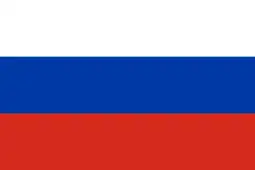 Russia.
Russia.
Ninth winter-over (DC09 – 2013)
The ninth wintering took place with a team of 15 people (nine French, five Italian and one Greek):
- Anne-Marie Courant: station leader, physician,
 France
France - Evangelos Kaimakamis: ESA biomedical research,
 Greece
Greece - Helene Faradji: astronomer,
 France
France - Christophe Leroy Dos Santos: astronomer,
 France
France - Yann Reinert: astronomer,
 France
France - Jean Gabriel Coll: electrician,
 France
France - Yannick Marin: technical chief,
 France
France - Bruno Epifania: computer, telecommunications,
 Italy
Italy - Simon Reuze: mechanic,
 France
France - Elio Padoan: glaciologist, atmospheric chemistry,
 Italy
Italy - Luigi Vailati: chef,
 Italy
Italy - Olivier Delanoë: Plumber,
 France
France - Albane Barbero: glaciologist, atmospheric chemistry, meteorological maintenance,
 France
France - Antonio Litterio: electronic technician for science,
 Italy
Italy - Simonetta Montaguti: atmospheric science and climate,
 Italy
Italy
Tenth winter-over (DC10 – 2014)
The tenth wintering took place with a team of 13 people (six French, five Italian, one Russian and one Greek):[19]
- Bruno Limouzy: Electrical motors,
 France
France - Giorgio Deidda: Chef,
 Italy
Italy - Tindari Ceraolo: Physician,
 Italy
Italy - Adrianos Golemis: ESA biomedical research,[20]
 Greece
Greece - Pierre Pejoine: Mechanic,
 France
France - Paride Legovini: Physicist,[21] Electronic technician for science,
 Italy
Italy - Julien Ribet: Electrotechnician,
 France
France - Tommaso Nicosia: Computer, telecommunications,
 Italy
Italy - Daniele Tavagnacco: Astrophysicist,
 Italy
Italy - Olivier Haye: Technical Chief, plumbing and heating,
 France
France - Cecile Lenormant: Chemist,
 France
France - Igor Petenko: Atmospheric science and climate,
 Russia
Russia - Xavier Joffrin: Astronomy,
 France.
France.
During the 2014 Antarctic winter Concordia was an active amateur radio station: Paride Legovini operated from there on a weekly basis with call sign IA/IZ3SUS.[22] The HF radio equipment consists in a Rohde & Schwarz XK2100L transceiver with a 150W RF output and a delta loop antenna located a few hundreds of meters away from the station.[23]
The analemma (path that the sun follows in the sky if photographed at precisely the same time every week through the course of a year) was imaged for the first time ever in Antarctica by Adrianos Golemis during the 10th winterover mission at Concordia Station (2013–2014). The resulting composite exposure image was selected as NASA Astronomy Picture of the Day (APOD) on 23 September 2015.
Eleventh winter-over (DC11 – 2015)
The eleventh wintering is taking place from February 2015 to November 2015 with a team of 13 people (six French, five Italian, one British and one Swiss):[24]
- Mario Salza: Station Leader, Information and Communications Technology (ICT),
 Italy
Italy - Yannick Marin: Technical Manager and Electrical motors,
 France
France - Antonietta Roveran: Physician,
 Italy
Italy - Roxanne Jacob: Glaciology and Atmospheric Chemistry,
 France
France - Luca Ficara: Chef,
 Italy
Italy - Guillaume Poirot: Mechanic,
 France
France - Giampietro Casasanta: Glaciology and Atmospheric Remote Sensing,
 Italy
Italy - Benoit Laurent: Electronics for Science,
 France
France - Markus Wildi: Astrophysics,
.svg.png.webp) Switzerland
Switzerland - Benoit Joncheray: Plumbing and Heating Engineering Technician,
 France
France - Lorenzo Moggio: Atmospheric physics,
 Italy
Italy - Beth Healey: ESA Biomedical Research,
 United Kingdom
United Kingdom - Rémi Puaud: Electrical Engineering Technician,
 France
France
Twelfth winter-over (DC12 – 2016)
The twelfth winter began on February 10, 2016, with twelve overwintering (five Italian, six French, one Dutch):
- Vitale Stanzione: Station Leader, Glaciology,
 Italy
Italy - Elvio Lazzarini: Medical Doctor,
 Italy
Italy - Alessandro Fausto: Information and Communications Technology (ICT),
 Italy
Italy - Luciano Milano: Electronics for Science,
 Italy
Italy - Bertrand Bonnefoy: Chef,
 France
France - Floris van den Berg: ESA Biomedical Research MD,
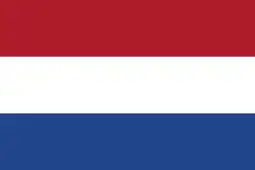 the Netherlands
the Netherlands - Georges Karakasidis: Electrician,
.svg.png.webp) Belgium
Belgium - Henri van den Hove: Plumbing and Heating Engineering Technician,
 France
France - Olivier Leloir: Technical Chief,
 France
France - Gaetan Quere: Mechanic,
 France
France - Simonetta Montaguti: Atmospheric Science and Climate,
 Italy
Italy - Nicole Hueber: Glaciology and Atmospheric Chemistry,
 France
France
Thirteenth winter-over (DC13 – 2017)
The thirteenth winter began on February 9, 2017, with thirteen overwintering (five French, seven Italian, one Belgian Canadian):
- Simone Chicarella: Electronics for Science, Station Leader,
 Italy
Italy - Andrea Tosti: Information and Communications Technology (ICT).
 Italy
Italy - Didier L'Hôte: Technical Chief,
 France
France - Aldo Clemenza: Medical Doctor,
 Italy
Italy - Simone Marcolin: Chef,
 Italy
Italy - Laura Caiazzo: Glaciology and Atmospheric Chemistry,
 Italy
Italy - Sébastien Jullien-Palletier: Electrician,
 France
France - Yuri de Prà: Astronomy,
 Italy
Italy - Carole Dangoisse: ESA Biomedical Research MD,
.svg.png.webp) Belgium
Belgium .svg.png.webp) Canada
Canada - Alexis Robin: Plumbing and Heating Engineering Technician,
 France
France - Pol Monfort: Mechanic,
 France
France - Alfonso Ferrone: Atmospheric Science and Climate,
 Italy
Italy - Paul Serre: Chemistry,
 France
France
Fourteenth winter-over (DC14 – 2018)
The fourteenth winter began on February 6, 2018, with thirteen overwintering (five French, seven Italian, one Austrian):
- Moreno Baricevic: Electronics for Science,
 Italy
Italy - Remi Bras: Electrician,
 France
France - Coline Bouchayeur: Glaciology and Atmospheric Chemistry,
 France
France - Andre Bourre: Technical Chief,
 France
France - Marco Buttu: Astronomy,
 Italy
Italy - Filippo Cali' Quaglia: Atmospheric Science and Climate,
 Italy
Italy - Florentin Camus: Plumbing and Heating Engineering Technician,
 France
France - Mario Giorgioni: Information and Communications Technology (ICT),
 Italy
Italy - Carmen Possnig: ESA Biomedical Research MD,
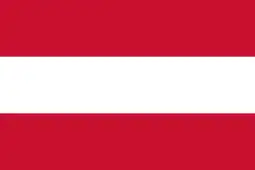 Austria
Austria - Jacques Rattel: Mechanic,
 France
France - Alberto Razeto: Medical Doctor,
 Italy
Italy - Marco Smerilli: Chef,
 Italy
Italy - Cyprien Verseux: Glaciology and Atmospheric Chemistry, Station Leader,
 France
France  Italy
Italy
Fifteenth winter-over (DC15 – 2019)
The fifteenth winter began on February 13, 2019, with thirteen overwintering (five French, six Italian, one Danish and one Australian):
- Nadja Albertsen: ESA Biomedical Research MD,
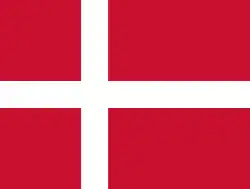 Denmark
Denmark - Damien Beloin: Mechanic,
 France
France - Ivan Bruni: Astronomy,
 Italy
Italy - Massimiliano Catricalà: Electronics for Science, Station Leader,
 Italy
Italy - Giuditta Celli: Glaciology and Atmospheric Chemistry,
 Italy
Italy - Meganne Louise Christian: Atmospheric Science and Climate,
.svg.png.webp) Australia
Australia  Italy
Italy - Gianluca Ghiselli: Medical Doctor,
 Italy
Italy - Daniele Giambruno: Chef,
 Italy
Italy - Thibault Gillet: Electrician,
 France
France - Bertrand Laine: Technical Chief,
 France
France - Julien Le Goff: Plumbing and Heating Engineering Technician,
 France
France - Alessandro Mancini: Information and Communications Technology (ICT),
 Italy
Italy - Julien Moyé: Glaciology and Atmospheric Chemistry,
 France
France
Sixteenth winter-over (DC16 – 2020)
The sixteenth winter began on February 7, 2020, with twelve overwintering (seven French, four Italian, one Dutch):
- Camille Bréant: Glaciology and Atmospheric Chemistry,
 France
France - Elisa Calmon: Chef,
 France
France - Andrea Ceinini: Mechanic,
 Italy
Italy - Loredana Faraldi: Medical Doctor,
 Italy
Italy - Sylvain Guesnier: Chief of the power plant,
 France
France - Luca Ianniello: Information and Communications Technology (ICT),
 Italy
Italy - Vivien Koutcheroff: Plumbing and Technical Chief,
 France
France - Wenceslas Marie Sainte: Electronics for Science,
 France
France - Inès Ollivier: Glaciology and Atmospheric Chemistry,
 France
France - Bastien Prat: Electrician,
 France
France - Alberto Salvati: Atmospheric Science and Climate, Station Leader,
 Italy
Italy - Stijn Thoolen: ESA Biomedical Research MD,
 Netherlands
Netherlands
Seventeenth winter-over (DC17 – 2021)
The seventeenth winter began on January 31, 2021, with twelve overwintering (five French, six Italian, one British):
- Cédric Albert: Electrician,
 France
France - Dennis Appere: Glaciology and Atmospheric Chemistry,
 France
France - Fabio Borgognoni: Glaciology and Atmospheric Chemistry,
 Italy
Italy - Marco Buttu: Electronics for Science,
 Italy
Italy - Rodolfo Canestrari: Atmospheric Science and Climate, Station Leader,
 Italy
Italy - Giuseppina Canestrelli: Medical Doctor,
 Italy
Italy - Charles Delgrange: Mechanic,
 France
France - Simone Marcolin: Chef,
 Italy
Italy - Quentin Perret: Boilermaker, Welder and Multipurpose Technician,
 France
France - Jean-François Roques: Technical Chief,
 France
France - Nicholas Smith: ESA Biomedical Research MD,
 United Kingdom
United Kingdom - David Tosolini: Information and Communications Technology (ICT),
 Italy
Italy
Eighteenth winter-over (DC18 – 2022)
The eighteenth winter began on 7 February 2022, with thirteen overwintering (six French, six Italian and one Swedish):[25]
- Massimiliano Catricalà: Station Leader, Electronics for Science,
 Italy
Italy - Fabien Farge: Medical Doctor,
 France
France - Angelo Galeandro: Atmospheric Science and Climate,
 Italy
Italy - Thomas Gasparetto: Astronomy,
 Italy
Italy - Nicolas Girard: Electrician,
 France
France - Stanislas Grabowski: Boilermaker, Welder and Multipurpose Technician,
 France
France - Hannes Hagson: ESA Biomedical Research MD,
 Sweden
Sweden - Alessia Nicosia: Glaciology,
 Italy
Italy - Thomas Antonio Massimo Pagano: Information and Communications Technology (ICT),
 Italy
Italy - Frederic Sergent: Technical Chief,
 France
France - Marco Smerilli: Chef,
 Italy
Italy - Pierre Supiot: Mechanic,
 France
France - Julien Witwicky: Glaciology and Atmospheric Chemistry,
 France
France
Nineteenth winter-over (DC19 – 2023)
The nineteenth winter began on 7 February 2023, with twelve overwintering (six French, five Italian and one German):
- Claude Blanc: Mechanic,
 France
France - Rudy Bunel: Technical Chief,
 France
France - Davide Carlucci: Station Leader, Electronics for Science,
 Italy
Italy - Stéphane Fraize: Medical Doctor,
 France
France - Sascha Freigang: ESA Biomedical Research MD,
 Germany
Germany - Jacopo Lucini Paioni: Chef,
 Italy
Italy - Vincent Morel: Electrotechnician,
 France
France - Domenico Mura: Astronomy,
 Italy
Italy - Damien Pessieau: Plumbing and Heating Engineering Technician,
 France
France - Luca Rago: Glaciology,
 Italy
Italy - Damien Till: Glaciology and Atmospheric Chemistry,
 France
France - Andrea Traverso: Information and Communications Technology (ICT),
 Italy
Italy
See also
- List of research stations in Antarctica
- List of Antarctic field camps
- List of airports in Antarctica
- Amundsen–Scott South Pole Station
- Casey Station
- Concordia Subglacial Lake
- Dome A (or Dome Argus)
- Dome C (also known as Dome Charlie or Dome Circe)
- Dome F (or Dome Fuji)
- Dumont d'Urville Station
- EPICA
- Ice core
- Law Dome
- Neumayer-Station III
- Vostok Station
- Zucchelli Station
- List of Mars analogs
References
- 1 2 Antarctic Station Catalogue (PDF) (catalogue). Council of Managers of National Antarctic Programs. August 2017. p. 73. ISBN 978-0-473-40409-3. Archived (PDF) from the original on 22 October 2022. Retrieved 16 January 2023.
- ↑ "AT03 Concordia Station". Airport Nav Finder. Retrieved 15 October 2018.
- ↑ "A minimalist photo taken from space reveals the incredible isolation of Antarctic researchers on Earth". Quartz. 11 January 2017. Retrieved 28 February 2023.
- ↑ Akshat, Rathi (14 August 2015). "What life is like in the most remote corner of the world". Quartz. Retrieved 12 November 2018.
- ↑ Salam, Alex (2009). "The coldest job on earth". BMJ: b2453. doi:10.1136/bmj.b2453. S2CID 79621954.
- ↑ "In the Cornucopia of the European Project of Ice Coring in Antarctica: the oldest Antarctic ice core" (Press release). Alfred-Wegener-Institut. 13 January 2005. Archived from the original on 3 January 2006.
- ↑ Abdelkrim Agabi; Eric Aristidi; Max Azouit; Eric Fossat; Francois Martin; Tatiana Sadibekova; Jean Vernin; Aziz Ziad (2006). "First whole atmosphere night-time seeing measurements at Dome C, Antarctica". Publications of the Astronomical Society of the Pacific. 118 (840): 344–348. arXiv:astro-ph/0510418. Bibcode:2006PASP..118..344A. doi:10.1086/498728. S2CID 15833099.
- ↑ Jon S. Lawrence; Michael C. B. Ashley; Andrei Tokovinin; Tony Travouillon (16 September 2004). "Exceptional astronomical seeing conditions above Dome C in Antarctica" (PDF). Nature. 431 (7006): 278–281. Bibcode:2004Natur.431..278L. doi:10.1038/nature02929. PMID 15372024. S2CID 4388419. Archived from the original (PDF) on 25 March 2006. → FAQ by the authors Archived 15 February 2006 at the Wayback Machine
- ↑ {Vernin, J., Chadid, M., Aristidi, E., Trinquet, H. and van der Swaelmen, M.}, title = "{First single star scidar measurements at Dome C, Antarctica}", journal = {AP}, keywords = {atmospheric effects, site testing, turbulence, instrumentation: detectors, methods: data analysis, methods: observational}, year = 2009, month = jun, volume = 500, pages = {1271-1276}, doi = {10.1051/0004-6361/200811119}, adsurl = {http://cdsads.u-strasbg.fr/abs/2009A%26A...500.1271V}, adsnote = {Provided by the SAO/NASA Astrophysics Data System} }
- ↑ {Giordano, C., Vernin, J., Chadid, M. and Aristidi, E. and Trinquet, H.}, title = "{Dome C Site Characterization in 2006 with Single-Star SCIDAR}", journal = {PASP}, year = 2012, month = may, volume = 124, pages = {494-506}, doi = {10.1086/665667}, adsurl = {http://adsabs.harvard.edu/abs/2012PASP..124..494G}, adsnote = {Provided by the SAO/NASA Astrophysics Data System} }
- ↑ {Chadid, M., Vernin, Chapellier, E., Trinquet, H. and Bono, G.}, title = "{First Antarctica light curve. PAIX monitoring of the Blazhko RR Lyrae star: S Arae}", journal = {AP}, keywords = {techniques: spectroscopic, methods: data analysis, techniques: photometric, shock waves, stars: variables: RR Lyrae, stars: atmospheres}, year = 2010, month = jun, volume = 516, eid = {L15}, pages = {L15}, doi = {10.1051/0004-6361/201014857}, adsurl = {http://cdsads.u-strasbg.fr/abs/2010A%26A...516L..15C}, adsnote = {Provided by the SAO/NASA Astrophysics Data System} }
- ↑ {Chadid, M., Vernin, J., Preston, G., Zalian, C., Pouzenc, C., Abe, L., A., Aristidi, E., Liu, L.~Y. and Trinquet, H.}, title = "{First Detection of Multi-shocks in RR Lyrae Stars from Antarctica: A Possible Explanation of the Blazhko Effect}", journal = {Astronomical Journal}, keywords = {hydrodynamics, methods: observational, stars: atmospheres, stars: oscillations, stars: variables: general, techniques: photometric}, year = 2014, month = nov, volume = 148, eid = {88}, pages = {88}, doi = {10.1088/0004-6256/148/5/88}, adsurl = {http://cdsads.u-strasbg.fr/abs/2014AJ....148...88C}, adsnote = {Provided by the SAO/NASA Astrophysics Data System} }
- ↑ Crouzet, Nicolas; Guillot, Tristan; Agabi, Karim; Rivet, Jean-Pierre; Bondoux, Erick; et al. (2009). "ASTEP South: An Antarctic Search for Transiting ExoPlanets around the celestial South pole" (PDF). Astronomy & Astrophysics.
- ↑ Daban, Jean-Baptiste; et al. (2010). Stepp, Larry M; Gilmozzi, Roberto; Hall, Helen J (eds.). "ASTEP 400: a telescope designed for exoplanet transit detection from Dome C, Antarctica". Society of Photo-Optical Instrumentation Engineers (SPIE) Conference Series. Ground-based and Airborne Telescopes III. 7733 (Ground-based and Airborne Telescopes III): 77334T. Bibcode:2010SPIE.7733E..4TD. doi:10.1117/12.854946. S2CID 122313435.
- ↑ "New year's mission to start new phase of exoplanet research". University of Birmingham. 6 January 2022. Retrieved 28 January 2022.
- ↑ "Le climat à Dome C (en °C et mm, moyennes mensuelles 1971/2000 et records dupuis 1990)". Benfxmth. Retrieved on 2014-12-12
- ↑ "89625: Concordia (Antarctica)". ogimet.com. OGIMET. 18 March 2022. Retrieved 18 March 2022.
- ↑ "89625: Concordia (Antarctica)". ogimet.com. OGIMET. 31 January 2023. Retrieved 1 February 2023.
- ↑ "Vivi con noi la XXIX Spedidione italiana in Antartide". Archived from the original on 15 March 2014. Retrieved 16 March 2014.
- ↑ "Follow MSS13 Adrianos Golemis to the Antarctic Concordia Station". Archived from the original on 15 March 2014. Retrieved 16 March 2014.
- ↑ "Paride Legovini's Website". Archived from the original on 15 March 2014. Retrieved 16 March 2014.
- ↑ "WAPONLINE > News & Information > Archive 2014 > February 2014". Archived from the original on 13 April 2014. Retrieved 12 April 2014.
- ↑ "IZ3SUS - Callsign Lookup by QRZ.COM". Retrieved 12 April 2014.
- ↑ "Vivi con noi la XXX Spedizione italiana in Antartide". Retrieved 2 April 2015.
- ↑ "Concordia: al via la 18a Campagna Invernale". Italiantartide. Retrieved 13 February 2022.
External links
- (in Italian) Official website Concordia Station
- (in Italian) Official website of the Italian Antarctic Programme
- (in French) Official website IPEV Institut Polaire Français Paul Emile Victor
- (in French) IPEV Concordia Station Archived 16 March 2011 at the Wayback Machine
- (in English) Chronicles from Concordia - winter over ESA blog
- (in English) Automated Astrophysical Site-Testing International Observatory (AASTINO)
- (in English) 1st Winterover at Concordia Station (2005) blog by Guillaume Dargaud, ISAC (Istituto di Scienze dell'Atmosfera e del Clima)
- (in French) 2nd Winterover at Concordia Station (2006) blog by Eric Aristidi, LUAN (Laboratoire Universitaire d'Astrophysique de Nice)
- (in French) 5th Winterover at Concordia Station (2009), blog by Cyprien Pouzenc, Laboratoire Fizeau (Nice, ex-LUAN), Observatoire Sirene
- COMNAP Antarctic Facilities
- COMNAP Antarctic Facilities Map
.svg.png.webp)

.jpg.webp)
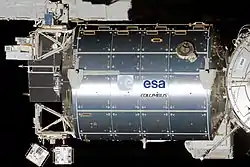
.jpg.webp)
